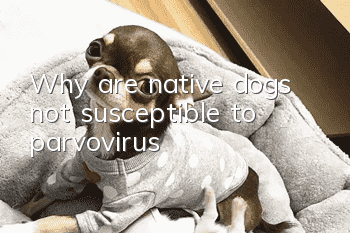Why are native dogs not susceptible to parvovirus?

In fact, native dogs also get small ones. Because native dogs eat a lot of miscellaneous food and have strong immunity, the probability of native dogs suffering from parvovirus is relatively small, so everyone thinks that native dogs will not suffer from parvovirus. In addition, native dogs are suitable for the local environment and have strong disease resistance. Breed dogs generally pursue breed characteristics and pure bloodlines, and there are cases of inbreeding. Most of them have their own genetic defects and low immunity. Secondly, breed dogs are generally companion dogs, and their breeding environments are relatively concentrated, usually in urban areas. Parvovirus is an infectious disease, and the dense breeding environment also increases the chance of infection.
Minor symptoms:
1. Enteritis type. The incubation period of enteritis-type parvovirus is relatively long, about 4 to 14 days. The symptoms of dogs in the early stages of the disease are similar to those of a cold, usually including lack of energy and loss of appetite, accompanied by vomiting and fever. It can even reach over 40 degrees. In the early stage, the vomitus is usually food, but after a day, severe diarrhea will occur. At this time, the feces will be relatively thin. As the condition becomes more serious, the dog's feces will turn into coffee color or tomato color, and the smell will change. Very heavy.
2. Myocarditis type. Parvovirus and myocarditis-type parvovirus usually occur in puppies. The common symptom is diarrhea, but they will suddenly become weak and even groan. In severe cases, shortness of breath and death may occur within a few hours.
- How to make your dog like to eat dog food Four ways to make your dog fall in love with dog food
- How to protect your dog’s food? Teach you tips on training your dog
- What should I do if my dog has lupus? Immune system diseases should not be underestimated
- If your dog's hair is cut and the skin is cut, the flesh is exposed. If the dog's hair is accidentally cut and the skin is cut, it must be disinfected immediately.
- Do dogs need deworming in summer? What should you pay attention to when raising dogs in summer?
- What to do if your dog has indigestion? Dog indigestion is no small matter!
- What should you pay attention to when vaccinating your dog? What should you pay attention to when vaccinating your dog?
- Symptoms of Rheumatism in Dogs What conditions can cause rheumatism in dogs?
- What to do if dogs fight at home? The owner is the best mediator
- What are the reasons why dogs are obese? Do you know these four reasons?



